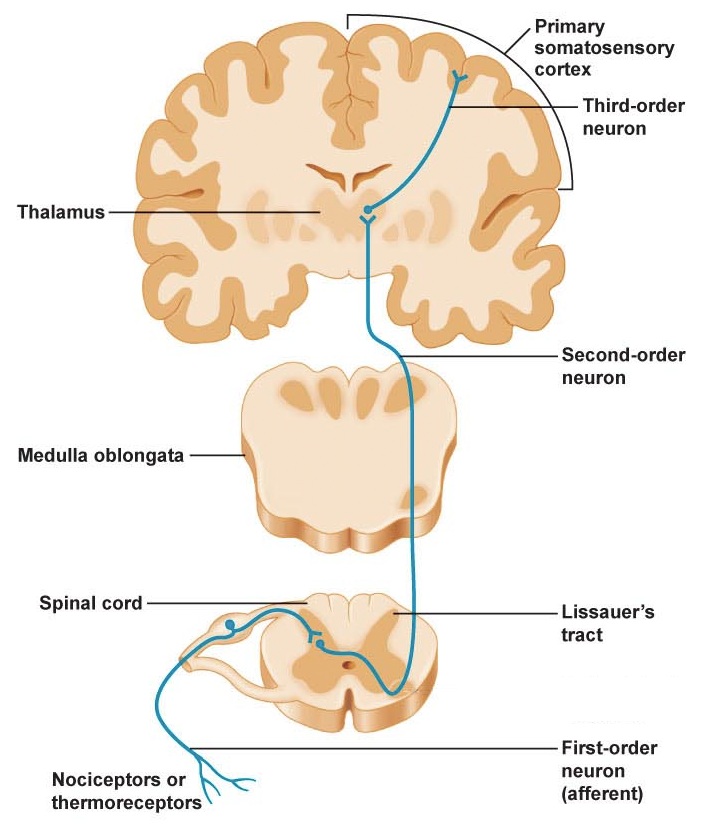Answer: Hyperalgesia refers to a decreased threshold for the sensation of pain.
In hyperalgesia, a person experiences pain at much lower stimulus intensity. They have an increased sensitivity to pain compared to a person without hyperalgesia. Hyperalgesia is the opposite of analgesia, the condition where a person doesn't experience pain, even at highly noxious intensities.
Pain is perceived when the skin is exposed to damaging stimuli. Intense pressure, extreme cold (below 15 C), or extreme heat (above 40 C) may trigger activation of pain mechanisms. These signals are then transmitted centrally via large myelinated axons called A delta fibers and thin unmyelinated axons called C fibers. The intensity of the signal can be modified at this point, possibly through activation of the descending pain inhibition pathway mediated by the periaqueductal gray and the Raphe nucleus.
Hyperalgesia may be a result of some kind of nerve damage. After tissue damage, the site of the injury may experience what is called primary hyperalgesia, while the surrounding tissue may experience a secondary hyperalgesia. These sensations are often experienced following a surgical procedure. In the laboratory, they can be mimicked by applying a freezing stimulus to the skin (Hyperalgesia induced by cutaneous freeze injury for testing analgesics in healthy volunteers.)
It can also result from an injury to the nociceptors, the components of the somatosensory system that respond to painful stimuli in the environment. The nociceptors themselves are expressed on the endings of sensory neurons. They respond to painful sensations at the skin by detecting both temperature and pressure. Upon detection of a painful stimulus, the body takes action to prevent further damage, by removing moving away from the stimulus or by removing the painful stimulus.
Additionally, chronic exposure to opioid drugs such as vicodin or morphine for pain management may lead to compensatory changes in the nervous system that might result in hyperalgesia.
Hyperalgesia is distinct from allodynia, the condition where an innocuous stimulus is perceived by the brain as painful. In allodynia, harmless sensations such as the feeling of clothes on our body may be perceived as painful.
Pain is often difficult to study because the experiences vary dramatically between individuals. Also, it is often a highly subjective phenomenon that depends on several factors outside of the stimulus itself.









